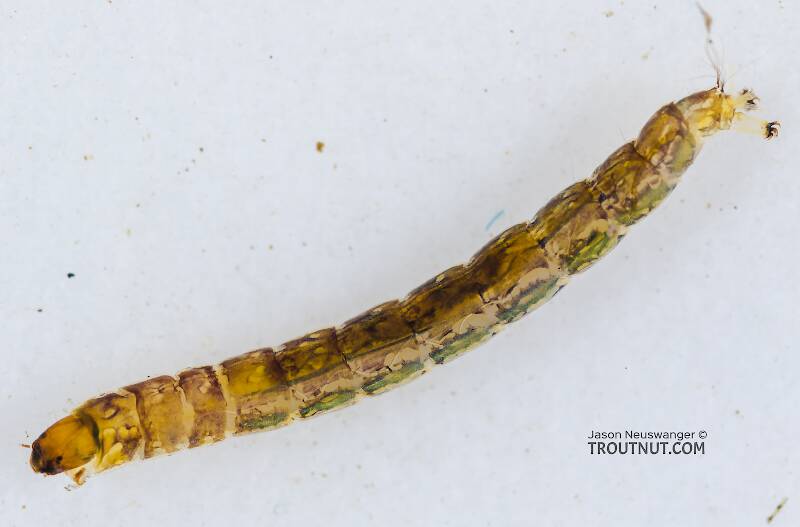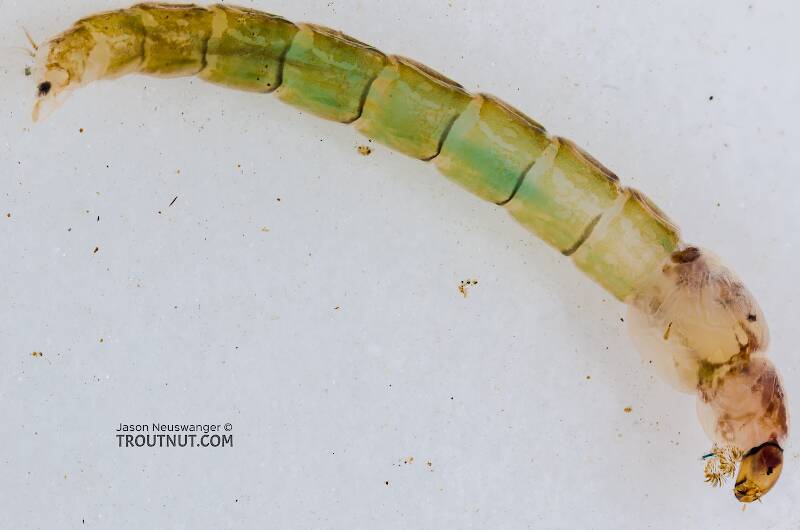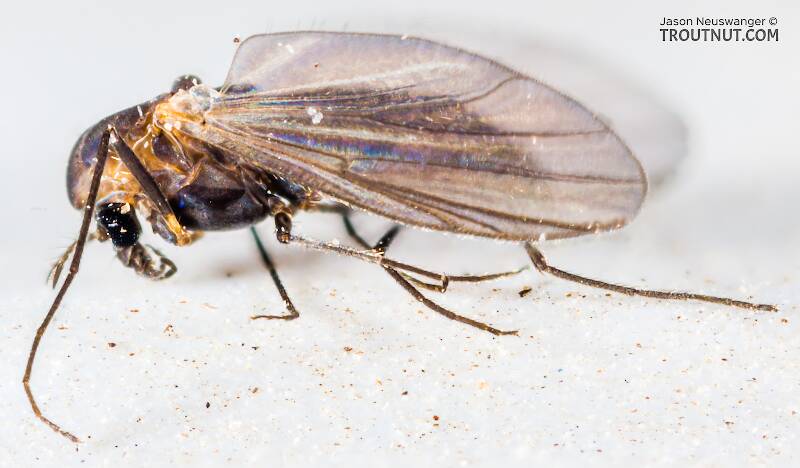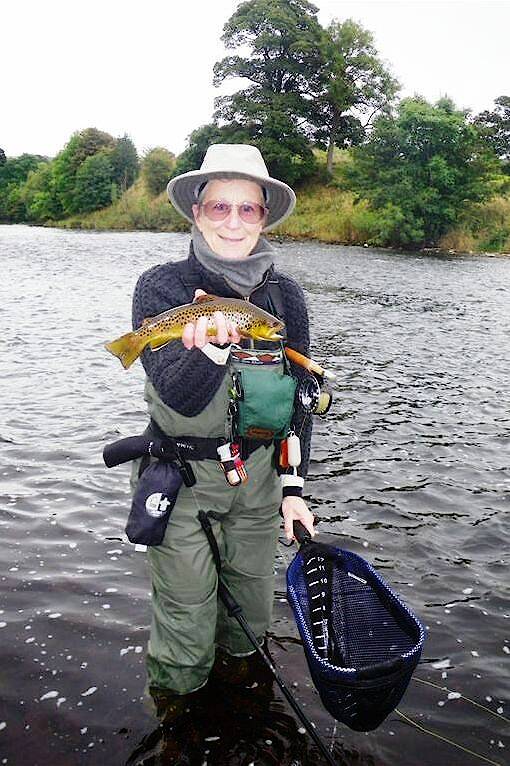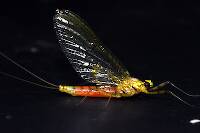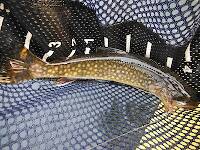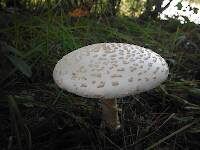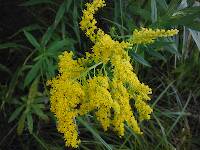
Hex Mayflies
Hexagenia limbata
The famous nocturnal Hex hatch of the Midwest (and a few other lucky locations) stirs to the surface mythically large brown trout that only touch streamers for the rest of the year.
Featured on the forum

This specimen resembled several others of around the same size and perhaps the same species, which were pretty common in my February sample from the upper Yakima. Unfortunately, I misplaced the specimen before I could get it under a microscope for a definitive ID.

Troutnut is a project started in 2003 by salmonid ecologist Jason "Troutnut" Neuswanger to help anglers and
fly tyers unabashedly embrace the entomological side of the sport. Learn more about Troutnut or
support the project for an enhanced experience here.
This topic is about the True Fly Family Chironomidae
Midges are the most important aquatic insects in some places, especially fertile spring creeks where they are extremely abundant and the current is so slow that it's efficient for trout to surface feed on very tiny insects.Some midges are large, up to hook size 14, but the majority are size 22 or smaller. The number of genera and species is hopelessly huge for angler entomologists to ever learn, and the identifing characteristics often require slide-mounting tiny parts under high-powered microscopes. Even the most Latin-minded fisherman must slip back to the basics--size and color--to describe his local midge hatches.
Example specimens
CaseyP on May 24, 2007May 24th, 2007, 3:13 am EDT
in the air over the stream last night was a cloud of "midges", all floating in pairs. the hundreds of pairs looked like little colons (:), little black dots keeping a constant distance. you had to see it to believe it. mating dances? has anyone else seen this?
river: Little Juniata, PA
water temp: 62 degrees
air temp: high 70s
time: twilight
river: Little Juniata, PA
water temp: 62 degrees
air temp: high 70s
time: twilight
"You can observe a lot by watching." Yogi Berra
Troutnut on May 24, 2007May 24th, 2007, 3:39 am EDT
Can't say that I have. Maybe they were all joined mating?
Jason Neuswanger, Ph.D.
Troutnut and salmonid ecologist
Troutnut and salmonid ecologist
CaseyP on May 24, 2007May 24th, 2007, 5:02 am EDT
the pairs were closer to each other than to other pairs, and the pairs were about equidistant from other pairs as they moved in the air. it looked like space was important, like birds on a wire; one of nature's really amazing regular patterns, i guess.
"You can observe a lot by watching." Yogi Berra
Troutnut on May 24, 2007May 24th, 2007, 5:49 am EDT
Oh, so they weren't touching. I guess that rules out mating. Still probably some behavior related to that. It sounds really interesting.
Jason Neuswanger, Ph.D.
Troutnut and salmonid ecologist
Troutnut and salmonid ecologist
CaseyP on May 25, 2007May 25th, 2007, 3:24 pm EDT
can we post video on this board? my camera can take short sequences of up to a minute, so next time i see this midge dancing class i'll think to record it.
"You can observe a lot by watching." Yogi Berra
Martinlf on May 26, 2007May 26th, 2007, 1:25 pm EDT
Casey, wish I'd known you were up at the J. I just returned from a two night trip (24th and 25th), and Jason joined me last night for a dense sulphur spinner fall. I'll let him tell you about it. How was your fishing?
"He spread them a yard and a half. 'And every one that got away is this big.'"
--Fred Chappell
--Fred Chappell
Quick Reply
Related Discussions
Topic
Replies
Last Reply
4
Jun 10, 2013
by Oldredbarn
by Oldredbarn
18
Nov 20, 2007
by Shawnny3
by Shawnny3


